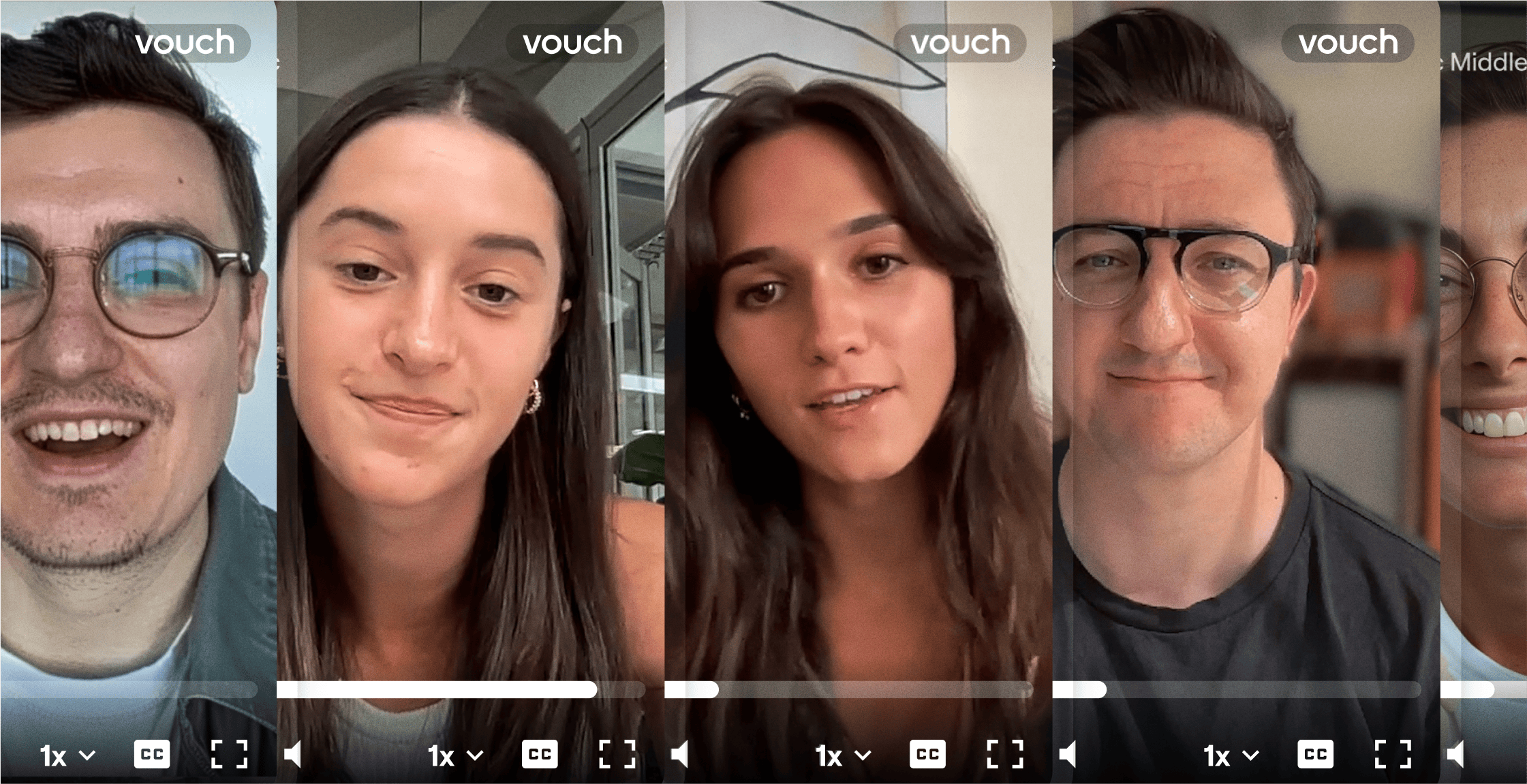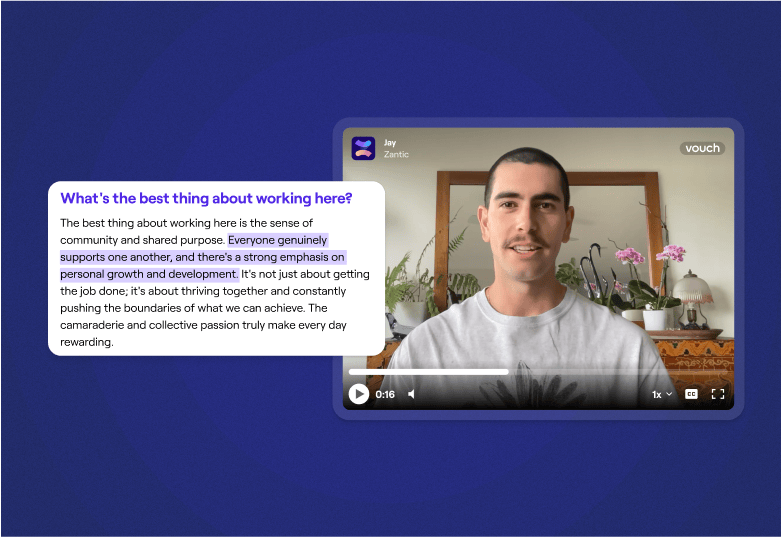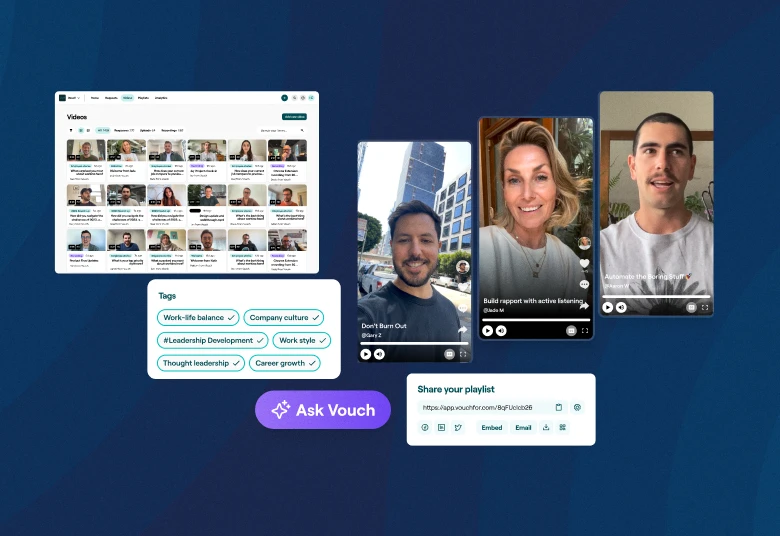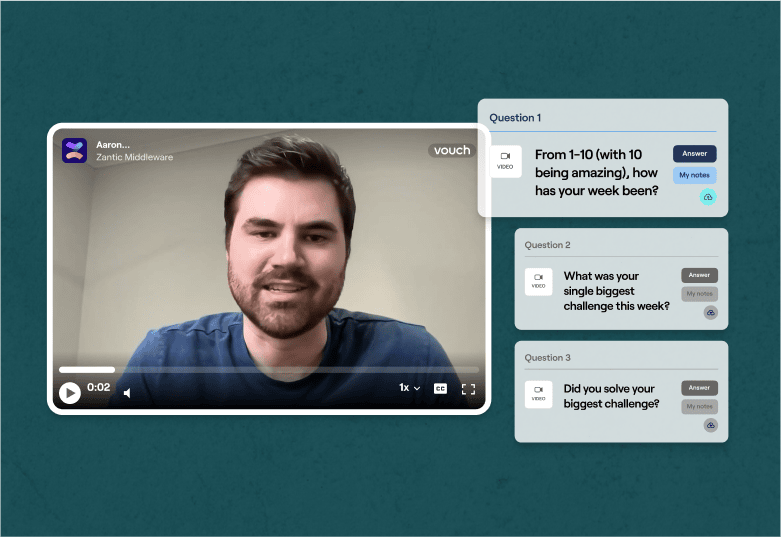In 2026, microlearning videos are rapidly changing the way organizations deliver internal training and work on their team's talent development.
Designed to meet the demands of the modern learning process, these short, step-by-step, bite-sized videos focus on a "single learning objective" and deliver critical information in a concise, engaging format.
Basically, microlearning videos are the ideal solution for today's busy employees who have limited time but need effective and efficient training.
In this guide, we'll explore everything you need to know about micro-learning videos, including why they're effective, how to create them, and their ability to boost knowledge retention while catering to different skill levels within your team.
Let's dive in.
What Are Microlearning Videos?
Microlearning videos are short, focused videos designed to teach a specific skill or concept within a brief period of time.
Typically, they range from 30 seconds to a maximum of 15 minutes, making them ideal for fitting into employees' busy schedules and self-paced learning needs.
Unlike traditional training videos, which might cover several topics over 30 minutes or more, micro-learning videos break down content into manageable, bite-sized modules that lead to faster, more effective learning outcomes.
Why Are Microlearning Videos So Effective?
The key to microlearning's effectiveness lies in its simplicity.
These videos are tailored to address a "single learning objective", making them easy to digest and remember.
Additionally, they align well with the growing limited attention spans of modern learners, who are used to consuming content in short bursts thanks to social media.
Data from a 2024 study by the Association for Talent Development (ATD) indicates that microlearning videos can improve knowledge retention by up to 60% compared to traditional training methods. The study also found that employees are 17% more likely to complete training programs that incorporate microlearning, thanks to the shorter time commitment required.
The AI-enabled workspace for talent teams.
- Unified workspace for talent teams
- Accelerate hiring with AI tools
- Auto-generate polished hiring and employer brand content
- Easily repurpose assets across all channel
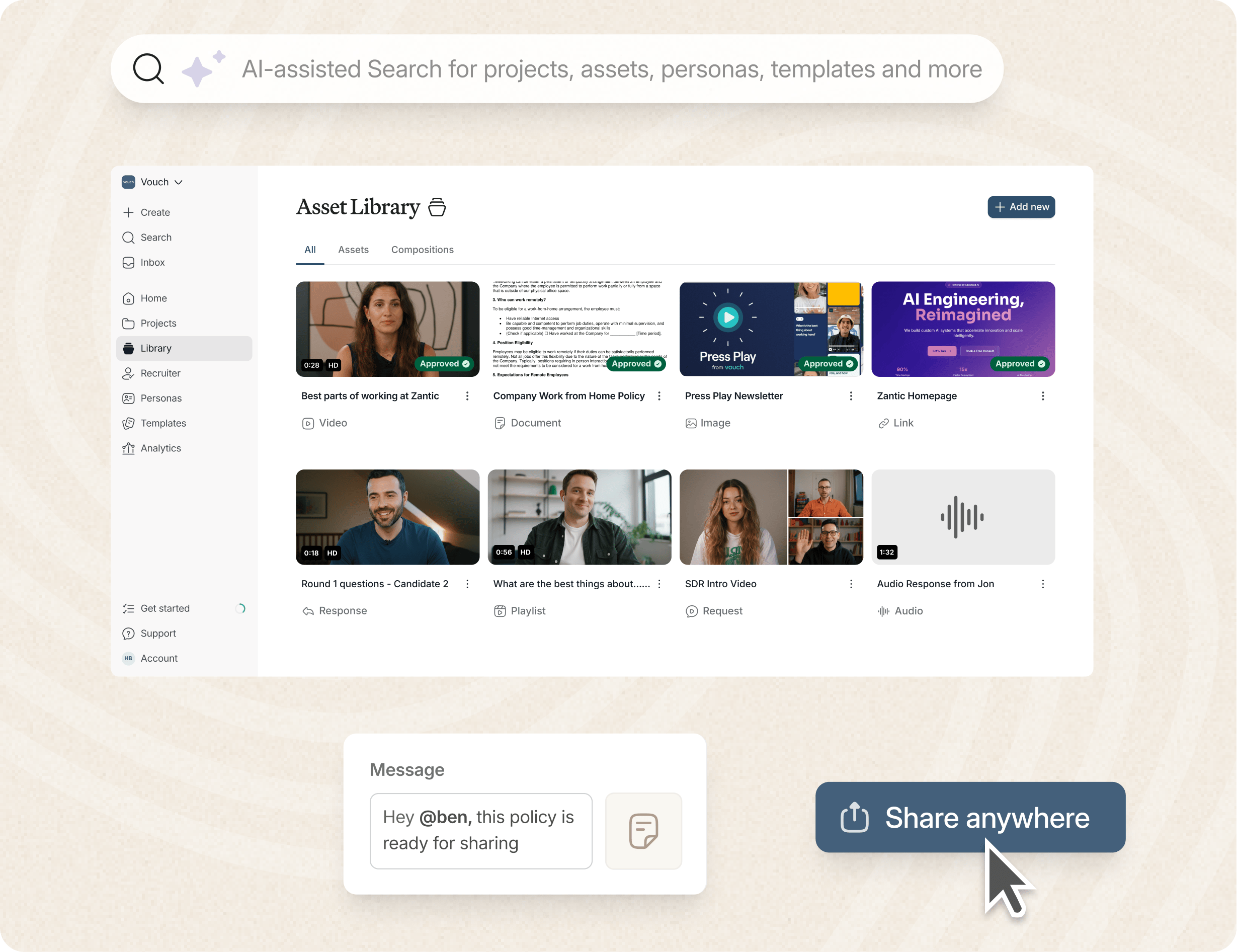
What Are The Benefits of Successful Microlearning Videos?
Successful microlearning modules offer several key benefits. They improve knowledge retention by delivering content in short, focused bursts; they cater to busy schedules by fitting into small pockets of time; and they enhance engagement across all different skill levels, making them perfect for a wide range of learners within your company.
Let's expand on these benefits:
1. Time Efficiency
Microlearning videos fit into the small pockets of time employees have during their workday. Instead of needing an hour-long block or more for training, they can complete modules in 5-15 minutes.
2. Increased Knowledge Retention
The short, focused nature of microlearning videos helps information stick. This leads to better long-term retention, which is crucial for skills within your company that need to be recalled later.
3. Catering to Busy Schedules
With many employees juggling multiple responsibilities, microlearning videos offer a way to learn without overwhelming their daily lives.
4. Flexibility
These videos can be used for various purposes, from onboarding to skill development to compliance training. They can also be accessed anytime, anywhere, making them perfect for remote or hybrid work environments.
5. Cater to Different Skill Levels
Whether a learner is a novice or an expert, microlearning can be tailored to meet their needs by offering different modules for varying skill levels.
6. Can Improve Your Company Culture
When you help your employees grow, you also help your company culture and employee retention.
What Are The Types of Microlearning Videos?
Microlearning videos are several types of shorter videos, each serving a specific purpose in delivering focused, bite-sized learning experiences by a subject matter expert.
Tools like Vouch Video also make creating your own internal microlearning videos a lot easier—anyone on your team can create them.
Here are a few microlearning video examples:
Demo and Tutorial Videos
Speedy demo videos show users how to perform a task step-by-step. These are particularly useful for software training or product demonstrations, allowing learners to see the process in action.
Scenario-Based Videos
These videos present a scenario and ask the learner to choose the best course of action. They are excellent for compliance training or teaching decision-making skills in a real-world context.
Refresher Videos
These are quick refresher modules designed to reinforce previously learned material. They're perfect for reviewing key ideas before a meeting or training session.
Animated Videos
Animated videos use character animation, whiteboard animation, or appealing animation to explain complex topics in a fun and engaging way. They are especially effective for breaking down complicated processes or concepts into simpler, more digestible chunks.
Interactive Videos
Interactive videos require active participation from learners. This could involve clicking on certain parts of the video to learn more, answering quiz questions, or making decisions that affect the video's outcome. These videos are great for keeping learners engaged and ensuring they understand the material.
Practical Steps for Creating Microlearning Videos
Creating microlearning videos might seem daunting, but with the right approach, it's a straightforward process. Here's a step-by-step guide:
- Define the Learning Objective: Start with a clear, attainable objective. What do you want learners to achieve by the end of the video? Keeping the focus narrow helps in creating effective microlearning content.
- Scriptwriting: Write a concise script that gets straight to the point. Avoid fluff and focus on delivering the key message. Remember, the entire video should be as short as possible while still being informative.
- Choose the Right Video Style: Decide whether the content is best delivered via animation, a demo, or an interactive video. Consider the nature of the content and the audience's preferences.
- Use Engaging Visuals: Incorporate engaging visuals, including animations, images, and text overlays. These elements make the video more appealing, and help convey the message more effectively.
- Leverage Authoring Tools: Use video authoring tools to create your videos. Tools like Adobe Captivate or Articulate 360 offer templates and resources that can streamline the creation process.
- Test and Review: Before finalizing the video, test it with a small group of trial users. Gather feedback on the content's clarity, engagement level, and effectiveness in conveying the intended message.
- Distribute and Monitor: Upload your video to an enterprise video hosting platform or learning management system. Monitor its performance by tracking completion rates, quiz scores, and learner feedback.
Case Study: Microlearning Video Success in Employee Onboarding
As an example, a case study is taking a mid-sized tech firm that recently revamped its employee onboarding process using microlearning videos.
Before the change, the onboarding process involved a series of lengthy training sessions that often overwhelmed new hires. This resulted in a 40% drop in retention after six months.
In 2026, the company decided to switch to a microlearning approach. They created a series of short, bite-sized videos, each focusing on a specific aspect of the onboarding process, such as company culture, product knowledge, and compliance training. These videos ranged from 3 to 7 minutes and were made available on the company's learning management system.
The results were impressive. Within a year, new hire retention increased by 30%, and the feedback from employees was overwhelmingly positive. They appreciated the ability to learn at their own pace and revisit the videos whenever they needed a refresher. The company's HR department also noted a significant decrease in the time and resources required for onboarding, freeing them up to focus on other strategic initiatives.
What are 7 key statistics on micro-learning?
While Microlearning itself is a simple concept, it can be applied to almost any field or industry with numerous benefits.
Here are seven of the major statistics on micro learning:
- According to research by Dresden University of Technology, microlearning improves focus and supports long-term retention by up to 80% compared to traditional learning methods.
- The Journal of Applied Psychology found that microlearning creates 50% more engagement than traditional eLearning approaches.
- Deloitte's research indicates employees typically spend only 1% of their workweek (approximately 24 minutes) on formal learning.
- LinkedIn's Workplace Learning Report found that 58% of employees would be more likely to use their company's learning tools if the content was broken into shorter lessons.
- Software Advice's industry survey reported that companies using microlearning see an 18% increase in employee engagement and 23% increase in information retention.
- RPS Research found that microlearning can reduce development costs by 50% and increase the speed of development by 300% compared to traditional courses.
- According to the Journal of Educational Technology Development and Exchange, learners answer questions 28% more accurately when using microlearning compared to traditional learning methods.
If you would like to learn more about microlearning, please just get in touch with the Vouch team or book a demo here!
FAQs
What is the ideal length for a microlearning video?
Ideally, microlearning videos should ideally be between 30 seconds to 10 minutes long.
Can microlearning videos be used for complex topics?
Yes, by breaking down complex topics into smaller, more manageable modules.
Are microlearning videos effective for compliance training?
Absolutely, they can simplify and engage employees in often dry compliance topics.
What types of visuals work best in microlearning videos?
Engaging visuals like animations, infographics, and interactive elements are most effective.
Can microlearning videos replace traditional training?
They can complement traditional training, making it more effective and accessible.
Do I need specialized software to create microlearning videos?
While specialized tools can help, you can also create effective videos with basic video editing software.
How do microlearning videos improve knowledge retention?
Their short, focused nature makes the information easier to remember and apply.
Conclusion
By adopting microlearning videos, your organization can deliver effective training in a way that fits into the modern learner's busy life.
These bite-sized videos not only boost knowledge retention but also enhance employee engagement, making them a valuable tool in any corporate training strategy.
Vouch Is Made For Microlearning!
Loved by companies like Canva, Nike, Cisco, HubSpot, Amazon, and more, tools like Vouch make leveraging video in your business communication and recruitment remarkably easy.
Be sure to book a Vouch demo today and chat with a video content expert.
You might also like

Elevate Your Brand Today With Vouch
Discover how Vouch can accelerate talent acquisition while helping you stay on-brand.


